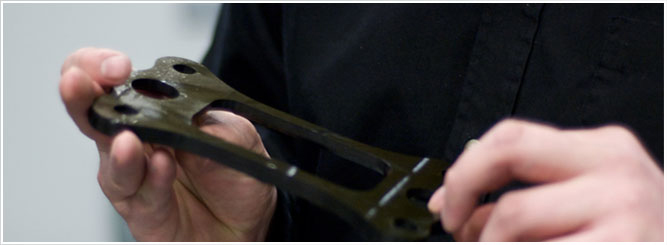
Abrasive Jet Cutting: How This Precision Process Shapes Our World
In the realm of modern manufacturing and fabrication, where precision meets versatility, few technologies offer the unique combination of power and delicacy found in abrasive jet cutting. This innovative process, often operating behind the scenes, is fundamental to creating the complex components that define industries from aerospace to art. But what exactly is it, how does it work, and why has it become such an indispensable tool? This article delves deep into the world of abrasive jet cutting, exploring its principles, advantages, applications, and the factors that make it so effective.
What is Abrasive Jet Cutting? The Core Principle Explained
At its most fundamental level, abrasive jet cutting is a non-traditional machining process that uses a high-velocity stream of abrasive particles mixed with a fluid (typically water or air) to erode material from a workpiece. Think of it as a highly controlled, supremely powerful sandblaster that can follow intricate digital designs with incredible accuracy.
The process involves three key components:
The Propellant: This is usually a high-pressure pump that pressurizes water to extreme levels (reaching 60,000 PSI or more) or a compressor that generates a powerful stream of air.
The Abrasive: A granular material, most commonly garnet, is fed into the stream. Other abrasives like aluminum oxide, olivine, or even recycled materials are used for specific applications. The abrasive particles are the actual agents of cutting.
The Nozzle: This is the precision-engineered component where the high-pressure fluid and abrasive mix and are focused into a coherent, ultra-fast jet. The nozzle’s design is critical for achieving a clean, consistent cut.
The mixture of fluid and abrasive is then directed at the material through a small-diameter nozzle. The immense kinetic energy transferred from the jet to the workpiece causes micro-chipping and erosion along a very narrow path, effectively “cutting” through the material without any physical contact.
The Unmatched Advantages of Choosing Abrasive Jet Cutting
Why would an engineer or artist choose abrasive jet cutting over other methods like laser, plasma, or mechanical cutting? The answer lies in a set of distinct and powerful advantages:
Cold Cutting Process: Unlike thermal cutting processes (laser, plasma), abrasive jet cutting generates almost no heat. This eliminates the Heat-Affected Zone (HAZ), meaning the material’s intrinsic structure remains unchanged. There is no hardening, warping, or residual stress, which is crucial for metals that are heat-sensitive.
Material Versatility: This is arguably its greatest strength. An abrasive jet cutting system can effortlessly cut through incredibly hard materials like titanium, tool steel, and granite, and then immediately switch to cutting soft, delicate materials like rubber, foam, carpet, or food products without any change in hardware—only the pressure and abrasive feed rate need adjustment.
High Precision and No Tool Wear: Since there is no physical cutting tool, there is no tool wear to compensate for. The cutting “tool” is the stream of abrasive, which is constantly renewed. This ensures consistent cutting quality from the first part to the last, allowing for exceptional precision and repeatability with tight tolerances.
Omni-Directional Cutting: The jet can move in any direction, allowing it to produce incredibly complex geometries, sharp corners, and intricate details that would be impossible or prohibitively expensive with traditional mechanical cutters.
Environmentally Friendly: The process primarily uses water and natural mineral abrasives like garnet. It does not produce hazardous fumes or vapors, making it a cleaner and safer alternative to many other industrial cutting processes.
Where is Abrasive Jet Cutting Used? Diverse Applications Across Industries
The unique benefits of abrasive jet cutting have led to its adoption in a vast array of sectors. Its ability to handle such a wide range of materials makes it a universal fabrication tool.
Aerospace and Aviation: Used for cutting heat-sensitive titanium and aluminum alloys, composites (like carbon fiber), and intricate engine components without altering their metallurgical properties.
Architecture and Art: Perfect for creating detailed designs in stone, marble, glass, and metal for decorative panels, sculptures, signage, and custom countertops. Artists value its ability to translate digital designs into physical media with flawless accuracy.
Automotive Industry: Employed for prototyping, cutting gaskets, interior components (foam, fabrics), and custom parts from various materials without thermal distortion.
Electronics: Precisely cuts circuit boards, semiconductors, and other fragile components where heat and mechanical stress must be avoided.
Food Industry: Surprisingly, a specialized form of abrasive jet cutting using food-safe abrasives is used for precision cutting of cookies, cakes, and other products, minimizing waste and enabling complex shapes.
Key Parameters for an Optimal Abrasive Jet Cut
Achieving a perfect cut requires careful balancing of several interacting parameters. Understanding these is key to mastering the process.
Abrasive Type and Size: The choice of abrasive (garnet being the most common) and its mesh size (fineness) directly affects the cutting speed and surface finish. A coarser grit cuts faster but leaves a rougher edge, while a finer grit provides a smoother finish at a slower rate.
Water Pressure: Higher pressure generally translates to faster cutting speeds and the ability to cut thicker materials. However, it also increases operating costs and wear on components.
Traverse Rate: This is the speed at the cutting head moves across the material. Finding the optimal speed is critical; moving too fast will result in an incomplete cut, while moving too slow wastes time and abrasive and can widen the kerf (the width of the cut).
Standoff Distance: This is the distance between the nozzle and the workpiece. A larger distance can cause the jet to diverge, leading to a wider kerf and a tapered edge, while a very small distance risks damaging the nozzle from splashback.
Focus Tube (Nozzle) Diameter: The diameter of the mixing tube dictates the fineness of the jet. Smaller diameters allow for more intricate details, while larger diameters are better for thicker materials.
Waterjet vs. Abrasive Jet: Understanding the Critical Difference
It is crucial to clarify a common point of confusion. The term “waterjet cutting” often refers to two distinct processes:
Pure Waterjet Cutting: Uses only a stream of ultra-high-pressure water. It is excellent for cutting soft materials like foam, rubber, paper, and food.
Abrasive Waterjet Cutting: This is the full, technical name for abrasive jet cutting. An abrasive is added to the water stream, enabling it to cut hard materials.
When people refer to cutting metal or stone with a waterjet, they are almost always talking about abrasive jet cutting. The addition of abrasive is what transforms a waterjet from a tool for soft materials into a powerhouse capable of machining almost any substance.
The evolution of abrasive jet cutting is ongoing. Future trends point towards even greater efficiency and capability. We can expect advancements in pump technology to deliver higher pressures with lower energy consumption, smarter software for predictive maintenance and real-time parameter adjustment, and the development of more efficient and sustainable abrasive recycling systems. Furthermore, the integration of abrasive jet cutting heads into multi-axis and robotic systems will open new possibilities for 3D machining and complex part fabrication, solidifying its place as a cornerstone of advanced manufacturing.
From shaping the wings of an aircraft to etching a beautiful design into glass, abrasive jet cutting is a testament to the power of precision and innovation. Its unique cold-cutting nature, unparalleled material versatility, and pinpoint accuracy ensure that it will continue to be a vital tool for engineers, designers, and artists looking to push the boundaries of what is possible in fabrication.
continue reading
Related Posts
- 1371 words6.9 min read
- 1449 words7.3 min read



